




















Chairman
ViveckGoenka



Sr.Vice
Asst.Vice

Harit
Editor
Viveka
BUREAUS

Lakshmipriya Nair,Kalyani Sharma
Reflecting
Akanki
Pravin Temble
Rekha
Rakesh

Rajesh
Ambuj
Ashish
Debnarayan
Pushkar
Mohan






















Chairman
ViveckGoenka



Sr.Vice
Asst.Vice

Harit
Editor
Viveka
BUREAUS

Lakshmipriya Nair,Kalyani Sharma
Reflecting
Akanki
Pravin Temble
Rekha
Rakesh

Rajesh
Ambuj
Ashish
Debnarayan
Pushkar
Mohan
TheMaiden Pharma case has once again highlighted the loopholes in India's medicine regulatory system. The World Health Organization's (WHO) medical product alert of October 3 that four of the Haryanabased companies' cough syrup brands were found with 'unacceptable amounts of diethylene glycol and ethylene glycol as contaminants came after health authorities in Gambia linked these syrups to the kidney damage and subseq inuent deaths of children who had been prescribed these syrups.
Regulators in India sprung into damage control mode. The Pharmaceuticals Export Promotion Council of India (Pharmexcil) has since suspended the membership of the company to prevent further exports. India's apex medicine regulator Central Drugs Standard Control Organisation (CDSCO), with state counterparts, conducted its own investigation at the company's Sonepat plant. Not surprisingly, they detected several discrepancies and violations of good manufacturing processes at the plant. The Haryana government then ordered the company to stop production at the Sonepat plant.
However, this is not the first time that diethylene glycol (DEG) has turned up to unacceptable levels in medicines. Worse, Maiden Pharma has been a habitual offender. So, clearly, the previous raps on the knuckles were not taken seriously enough.
An overhaul of India's medicine regulatory system, starting with the recently notified “Drugs, Medical Devices and Cosmetics Bill, 2022” will hopefully plug the existing loopholes in pharma manufacturing and compliance to current good manufacturing practices. But this needs to be implemented not just in the manufacturing plants of pharma companies, but also all thirdparty contract manufacturers and ingredient manufacturers.
However, laws are only as good as their enforcement. Industry sources point out that the CDSCO continues to be under-staffed, despite periodic recruitment drives. The current structure seems to lend itself to territorial skirmishes among centre, states and Union Territories (UTs), allowing shady manufacturers to simply move to different states when one state authority wisens up to their dicey manufacturing practices. So, how much longer will it take for our regulators to be allocated the resources to enforce them?
There is no doubt that the pharma sector will always be expected to work to higher regulatory standards than other industries; simply because it is literally a matter of life or death. The complexity of complying to different regulatory practices across geographies, compounded by competition from other nations vying to discredit India's claim to be the 'pharmacy to the world,' has also increased. Scrutiny by overseas regulators like the US FDA as well as agencies like the WHO, will also increase, to ensure that the imperative to procure medicines at an affordable cost is not at the cost of quality.
Awaiting complete details of the outcomes of the investigations being conducted by agencies, both global and national, Dr Viranchi Shah, National President, Indian Drug Manufacturers Association (IDMA), reminds us that "the Indian pharma industry has demonstrated its capabilities of being a reliable supplier of goodquality affordable medicines" and assures "the best support to Indian and international regulators at all times."
While IPA works closely with global and Indian regulators and is committed to high quality standards, "Indian regulators are seized with the unfortunate incident at Gambia and this area is receiving their high attention," says Sudarshan Jain, Secretary General, IPA.
Reiterating the IPA's overall position that "quality is fundamental in healthcare," he refers to India's record of consistently supplying quality-assured affordable medicine globally during the unprecedented COVID times. While the country continues to have the highest number of the US FDAapproved plants, Jain refers to the recent additions of Cipla and Dr Reddy's Laboratories facilities to the the Global Lighthouse Network, considered a benchmark of quality.
While the top pharma companies have their reputations to protect, what do these statements mean to smaller contract manufacturers, who are far from public eye, and, yes, are used by many top pharma companies to cut costs? They are a huge reason for the affordability of medicines, but as has been proved once again, cutting corners on quality leads to higher costs in the long run.
I am sure that many in the sector will echo Nakul Pasricha, President, Authentication Solution Providers' Association (ASPA) when he hopes that this loss of innocent lives and the risk of damage to reputation of the Indian pharma industry will “spur concrete actions to correct the situation.”
Asserting that the responsibility of safeguarding the reputation of India's pharma industry “should be shared by regulators and manufacturers,” he reinforces that “the laws must be strengthened to punish offenders and our regulators should get the resources they need to enforce them.”
While the final results of the wider investigation are awaited, experts are now focussing on what steps must be taken to bring the culprits to book and prevent such incidents in future. Industry stakeholders are working to redeem the 'pharmacy of the world,' but this calls for an introspection beyond brand-building.
With Gambian authorities updating the death toll to 70 by October end, it is chilling that some stocks of these products are reportedly still untraceable and could be in circulation, thanks to a weak and porous supply chain.
Pasricha thus uses this latest incident to focus attention “towards the serious consequences of falsified medicines in the healthcare and pharma ecosystem.”
And, can patients play watchdog, tracking both regulator and manufacturer? Pasricha suggests that since it's ultimately patients who suffer due to such incidents, they must be protected via education and empowerment, and the use of authentication solutions like the use of "phygital" authentication and traceability could go a long way towards curbing such incidents. He suggests that acceleration of ongoing regulatory efforts in this regard, such as the iVeda portal for exports and the QR coding initiative for domestic drugs, could bring centralised data verification and a higher level of security.
Unfortunately, past experience shows that after working to contain the crisis, stakeholders hit the snooze button and go back to ‘business as usual.’ Inspite of many workshops on quality conducted by IPA, IDMA and other industry associations, bad apples in the pharma basket continue to exploit the loopholes, endangering lives and the reputation of the entire sector and the country's hard-won global credentials. What will it take to break this cycle?
VIVEKA ROYCHOWDHURY, Editor viveka.r@expressindia.com viveka.roy3@gmail.com

Industry stakeholders are working to redeem the reputation of the 'pharmacy of the world,' but this calls for an introspection beyond brandbuilding

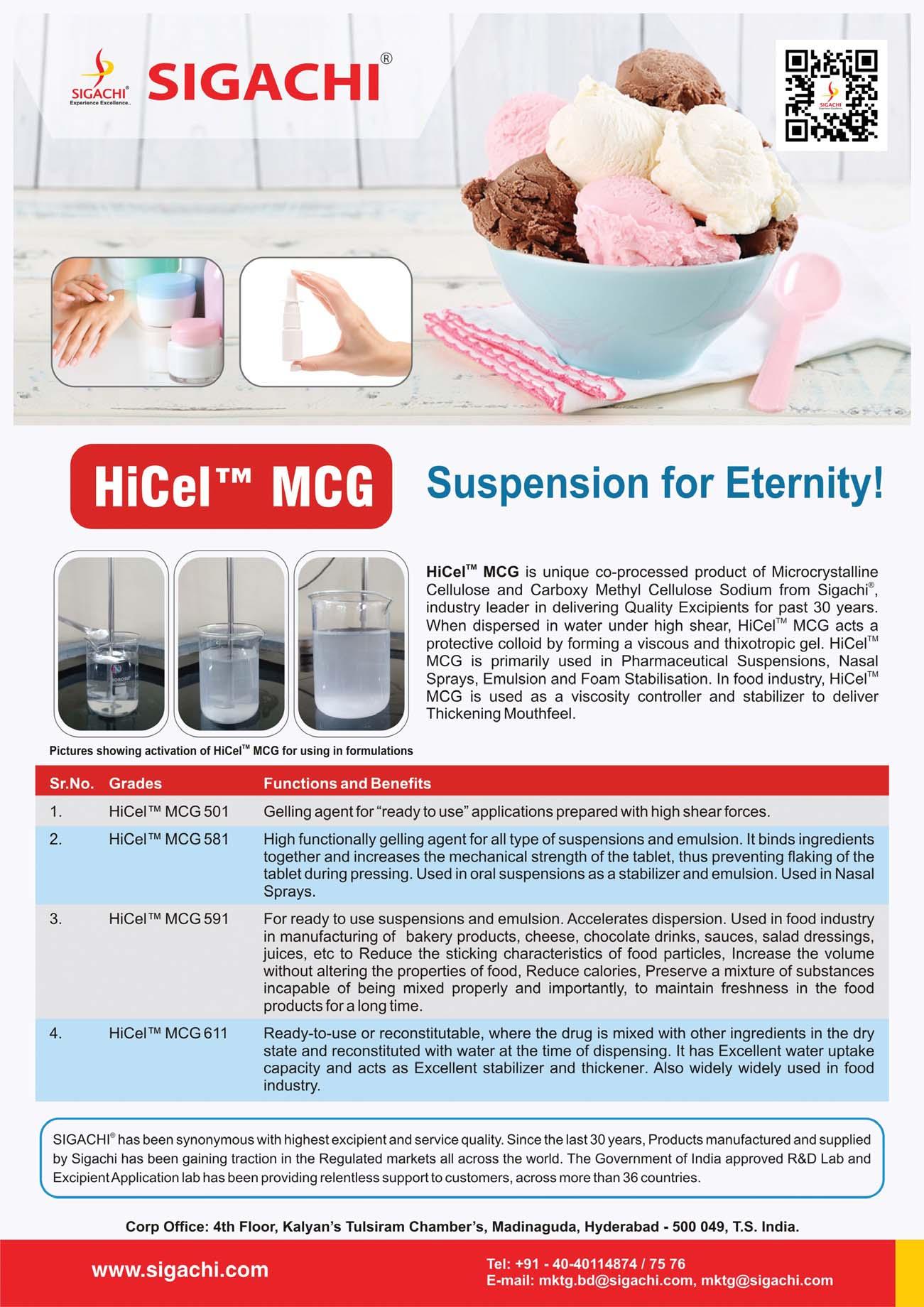

India is a veritable pharmacy to the world. With a market size of nearly $42 billion, its pharma sector made exports worth over $24 billion and recorded a 200 per cent Year-on-Year (YoY) growth in FDI inflows. On the back of 3,000 companies, 10,500 manufacturing facilities and a skilled resource pool, the Indian pharma industry has made tremendous strides on the global front. It produces three out of five vaccines worldwide, captures 20 per cent of the global supply of generic drugs, and ranks thirdin the world by production volume.
While the sector has seen sustained growth, regulatory hurdles have blunted the pace of progress. To illustrate, a mid-sized pharma company with a factory in just one state faces 998 compliances involving at least 70 one-time registrations and approvals. These compliances run into several thousands as the company expands its operational capacity and geographical footprint. The sheer number of regulatory updates makes the compliance universe all the more fluid and unpredictable. Over 3,500 updates are published yearly on more than 2,000 government websites, with no comprehensive mechanism to track them on a real-time basis.
The categories of compliance are also diverse, spanning across finance and taxation, secretarial, commercial, labour and environment,
safety and health. These are accompanied by a plethora of industry-specific compliances such as obtaining licences under the Drugs and Cosmetics Act, 1940, submitting quarterly returns as per the Narcotic Drugs and Psychotropic Substances Act, 1940 and instituting pricing mechanisms in accordance with the Drugs Price Control Order, 2013. The ICMR Code - Ethical Guidelines for Biomedical Research on Human Participants also prescribes a host of compliances including registering with the National Apex Committee for Stem Cell Research, providing compensation for subjects of medical trials and giving notifications to the Ethics Committees in case of termination or suspension of trials.
In India, the pharma industry is highly regulated by the Drugs Controller General of India (DCGI) under the Central Drugs Standard Control Organization (CDSCO). However, as companies look to fulfill their export ambitions, they are confronted by extensive regulatory norms imposed by other countries.
For instance, the US has enacted the Health Insurance Portability and Accountability Act (HIPAA), which sets out numerous compliances for healthcare entities to protect sensitive patient data. Drug controllers across the world, such as the US Food and Drug Administration (FDA), the European Medicines Agency (EMA), the Federal Drug Control Service
of Russia and the South African Medicines Control Council, have their own procedures, documentation and controls.
At the same time, the business environment for pharma companies faces regulatory hostility in the form of imprisonment clauses. Of the 998 compliances dealt with by a pharma MSME, close to 50 per cent prescribe jail terms for violations. A sizeable portion of them criminalises procedural violations and technical lapses rather than serious offences involving willful harm. Three out of every five imprisonment clauses prescribe jail terms exceeding one year, highlighting the severe implications for noncompliance in the sector. The cost of poor compliance is simply too high, and, thus, effective compliance management has become a business imperative.
TeamLease RegTech recently launched a first-of-itskind report “Simplifying Compliance Management for Pharmaceutical Companies” on the state of regulatory compliance in the pharma sector. It details the numerous challenges encountered by the industry and proposes actionable recommendations for reducing the compliance obligations of pharma companies. It also supplements its findings with crucial industry insights, providing a unique insider perspective into the reforms needed for enabling ease of doing business in this pivotal sector.
Rishi Agrawal,Co-founder and CEO,TeamLease Regtech,explains the numerous challenges encountered by the pharma industry,while also proposing actionable recommendations for reducing the compliance obligations of pharma companies
As companies look to fulfill their export ambitions,they are confronted by extensive regulatory norms imposed by other countries
Medicines are life savers. So, it is a general expectation that there should be a uniform standard anywhere in the world and the general public feels that this should be the case. But there is a big difference between what we feel and what reality is.
It is a fact that the quality of medicine sold globally is not the same across countries; in fact, not even at the domestic level. While this situation is not known to the patients, most doctors too could be ignorant of this fact.
It is a harsh reality that different-quality medicines are produced all over the world, and the drivers of quality are not the doctor’s or patient’s needs, but the economic and technical capacity of the country.
This fact goes unnoticed for years, until occasional incidents, like in July 2022, when 70 children died in Gambia, once again uncovered the supply of substandard medicines in poor countries. These deaths of poor children happened due to low-cost cough medicine imported from India. The World Health Organization (WHO) subsequently declared the medicines of substandard quality and banned its use all over the world. The Indian drug control administration woke up, but only after this declaration at the international level, and patted itself on the back, saying ‘’Good. This medicine was not supplied in India.’’ What duplicity!!
Globally, the automobile in-
dustry is primarily developed based on technology researched in Europe and Japan. Consequently, when it comes to the safety standards for car manufacturing, cars from Europe are the ‘’safest’’ followed by those from Japan.
Secondly, based on the technology of these countries, cars are manufactured in other countries including India, where suitable and minimum technology base is available. However, when you consider the safety of cars manufactured in these secondary markets, by using secondary technology, the safety
of these cars is at its lowest; since these countries aim to provide cars at affordable prices, so that maximum people can afford to buy these cars.
It is the same case with research in medicines. In this context, it is worthy to note the findings of the WHO reports on the Situation of Medicines (2007-2012) and Access to Medicines (May 2019).
◆ New techniques and new
products are being developed, and are being marketed world over, still, many product gaps and delivery challenges remain unmet.
◆ Because the priorities in research are not “needbased’’ but “market-based’’
◆ Consequently, the “scale of the development’’ does not match the “scale of people’s need’’ for better access to medicine, particularly in Low Income Countries (LICs) and low-income groups in Middle Income Countries (MICs).
Thus, the main drivers for industry engagement in research are trade, and not health needs. Consequently, medicines are invented for the “few diseases” and for “few countries,’’ where there is a sizeable global market. Naturally, during the last 50 years, hardly any new medicine has been invented for diseases like malaria, dengue, leptospirosis and AIDS, which are p revalent in Low Income Countries (LICs). In general, the development of new drugs is market-driven and has little to do with rare diseases in the developed countries or serious tropical diseases in the developing countries.

Beyond research, concerns about the safety of people in rich countries seem higher as accidents spur higher quality standards to accommodate the latest safety measures, which are strictly followed. But that ‘’urgency of updates’’ in safety standards is not felt necessary by other countries. This brings us to the present situation of having three broad quality and safety standards observed the world over.
Highest standards of quality with safety at the top: Medicines of this quality are updated and improved in terms of safety standards, and are manufactured using the latest manufacturing technologies which are updated to check entry of all possible impurities in the medicine, at the API (Active Pharmaceutical Ingredient) level and through faulty procedures of manufacturing. This is called "cGMP (current Good Manufacturing Practices) Quality Standards" of medicines. They are manufactured, used and exported from rich countries and other technologically advanced countries.
Medium standards with medium safety: These export standards are world-class and technically updated every two years in terms of safety. Such standards of manufacturing are called ‘’WHO GMP (World Health Organization–Good Manufacturing Practices)
Quality Standards’’ of medicines, and are exported from technologically advanced countries to non-technologically advanced countries.
The minimum standards with the lowest safety: Such medicines are not manufactured as per the WHO GMP standard. Hence, standards are not updated every two years, but updated randomly, mostly when accidents occur.
These quality drugs are used in countries like India, Brazil, etc., which are supplied as generic and brand medicines in the domestic market and also exported to technologi-
Reflecting that the recent accident in Gambia should be a wakeup call for Indian pharma companies, Dr Suresh Saravdekar,former Assistant Director,Ministry of Medical Education and Health,State of Maharashtra,and Honorary Consultant,Institute of Medical Sciences- BHU, Varanasi,points out how gaps in India’s pharma regulatory system need to be plugged

cally- and economicallyweaker countries like Gambia, Nigeria, Yemen, etc., where even basic standards for checking the quality of drug facilities are not available.
Indian pharma industry is technologically better placed, and has huge manufacturing base among developing countries. It is, therefore, considered as the "Pharmacy of the World." This strength of good manufacturing capacity made India a major supplier of COVID-19 vaccines worldwide, and, especially to poor countries.

Secondly, the Indian generic drug manufacturers are offering the lowest price, because of availability of good technology and trained manpower at the lowest price.
In this background, the recent deaths of Gambian children are not only shocking, but also regrettable, and lead to suspicion about the quality of medicines made in India. Moreover, this clearly exposes our casual and callous attitude and shows that we do not learn from such accidents.
Since, in the past too, there have been many such incidents, where the contamination of the amount of diethylene glycol in the medicine has resulted in deaths worldwide.
To quote few tragedies in India, in 2020, in Udhampur (Jammu) 12 children lost their lives due to this deadly cough medicine. Past incidents in-
clude 1998 (33 children in Delhi area); 1986 (14 patients in Sir J J Hospital, Mumbai) and in 1973 (14 children in Chennai).
The main reasons for manufacturing of substandardquality medicines are as follows:
◆ Having regulatory permission to offer medicines with various quality standards as mentioned above of the highest-, medium- and the lowestquality medicines
◆ Cutting the cost in order to quote the lowest price only to grab the tenders and
◆ Flexibility to use various types of drug licences, even permitting companies to only market medicines without manufacturing them.
The flexibility of using various licences, namely third party, loan licence and P-to-P (third-party manufacturing process which is exclusively used for one principal party) is being used by both purely marketing and by partly of manufacturing big companies in India to offer the medicines of various qualities at various prices as per the demand of the trade.
The partly marketing companies do have their own manufacturing facility, but, in order to reduce their own production cost, these big companies buy the same drug cheaply from small companies
on "third-party basis" and sell it under their own label at a higher price under brand name.
Apart from cost reduction, this facility of outsourcing of manufacturing is also used as a loophole in the law and as a scapegoat. When a drug is found to be substandard, the third-party manufacturer is prosecuted under law, and not the marketing company. Due to this, the big company escapes being penalised by simply shifting the blame to another third-party manufacturer, while it continues to enjoy its standard quality status of brand even though it has lost.
In India, this has now become a common practice. These companies are now taking maximum cost advantage to their benefit, and, at the same time, easily escaping from the clutches of the law, simply by pushing the burden of standards of quality solely on the shoulders of the thirdparty manufacturer.
In this context, I would like to mention an incident that happened during my career. In 1986, due to supply of the poor quality of medicine, 14 patients died in the government-run Sir JJ Hospital in Mumbai. The Government appointed a Commission headed by Justice Lentin to inquire into the matter.
After this incident, I was transferred from Government Medical College, Nagpur to Grant Medical College to
which Sir JJ Hospital is attached. I got a chance to study the recommendations of Lentin Commission Report, and, based on the report, we proposed to the Maharashtra Government that they should procure medicines only from a manufacturer observing international WHO-GMP standards and only those using their own manufacturing licence, rejecting companies resorting to third-party manufacturing.
The government accepted the recommendation. And, since 2003, Maharashtra, followed by some other states, started procuring medicines manufactured to international standards, in company-owned premises, and not out of thirdparty facilities. Since then, not a single case of supply of substandard medicines has been reported in Maharashtra government-run hospitals procured only under state rate contract.
It should be clear from the above discussion that there are many conflicting interests, ethical and other issues affecting the healthcare of each individual at local and global levels. Healthcare strategies and policies are developed based upon different approaches, influences and philosophies. The ultimate decisions affecting healthcare resource allocation rely on
government policies and legislations, which are influenced by political groups, commercial interests, patient groups and other society groups, in general. In the end, there has been a dominance of trade over health while framing international policies, which has resulted in segmentation of the world by quality standards of medicines.
Globally, the economy and technological strength of a particular country determines the ability to procure standard quality medicines. This has resulted in the segmentation of countries into four levels.
Technologically weak, but economically strong countries and rich countries like Arab countries in the Middle East, import world-class drugs, but, while doing so, a certificate is taken from the exporting country that the citizens of that exporting country are using the same drugs. (Country of origin Certificate) as an assurance of good quality.
Countries, both, technologically and economically weak, such as African countries, have no choice, but to import medicines of minimum quality which are more affordable from countries that may not be as up to date with international standards of manufacturing medicines as they should be.
Technologically weak, but

economically strong South Asian countries import drugs of minimum quality standards from technologically strong countries like India, Brazil, etc.
Technologically strong and economically strong, but in terms of population, it is not economically affordable to produce medicine, such countries like Belgium, Netherlands, Norway in Europe and in Russia, import the world's highest-quality drugs from the technologically-advanced countries of Europe and America.
How can we break out of this trap of international trade and save health?
As per my understanding, I propose that international bodies like WHO, etc. need to consider these actions.
The processes of contemporary globalisation is creating ever-closer ties between individuals and populations across different countries. The health of a population and the systems in place to deliver healthcare are increasingly affected by factors beyond the population and health system.
A series of six articles published in The Lancet’s February 2009 issue takes stock of the link between trade and health, and provides an overview of these links among international trade, trade liberalisation and health. The articles raised the following challenges and key issues that
face the health community and provide timely analysis of the key challenges facing efforts to achieve an appropriate balance between trade and health across a diverse range of issues.
Main challenge: It seems the two international regulating bodies WTO and WHO are operating in isolation, with little cooperation between them, but increasing dominance of trade over health. Therefore, currently, the main challenge to the public health community is how to position health more centrally in trade policy, to optimise opportunities to benefit health and healthcare, while minimising the risks posed. To do so requires better understanding of the key issues at the trade-health interface, seeking to engage with trade on a more equal basis, and taking the initiative in the presentation of health at trade fora.
◆ Increased trade and trade liberalisation is a defining feature of globalisation, and will directly and indirectly affect health and health systems. However, evidence is needed of policy responses to mitigate negative health effects, optimise health benefits, and distribute costs and benefits appropriately across different populations.
◆ There is a need for health officials, professionals and scholars to understand the key issues and to seek engage-
ment with their counterparts within trade and international affairs to secure an appropriate balance between the pursuit of health and trade.
◆ Action is needed to strengthen the substantive involvement of the WHO with international trade organisations like WTO. Although WHO’s influence comes from a range of sources, perhaps based on its technical expertise, but also including its global reach and historical legacy of respect among developing countries, there is undoubtedly a need to strengthen this in a more formal manner.
The recent accident in Gambia should be a wakeup call for Indian pharma companies. It is now necessary to improve the drug quality policy and raise the bar of quality standards to the global level. These are some gaps which need to be plugged immediately.
1. Global harmonisation of quality: It is necessary to make it mandatory for drug manufacturers to provide, manufacture and import-export medicines of the same highest quality all over the world

2. Stop the issue of licences for companies which are engaged in only marketing of medicines and abolish the "Outsourcing of Manufacturing" by big companies too. Or
enact a law by which the marketing company should also be equally held responsible, for prosecution and conviction along with third-party manufacturer for the supply of substandard medicines under the Drugs and Cosmetics Act.
3. There was a committee headed by Dr Mashelkar appointed by the central government. The committee was to discuss the circulation and consumption of spurious drugs in India, and to suggest a structure for a national drug regulatory system; and recommend measures to strengthen the drug regulatory infrastructure at the central and state levels, steps to be taken by the pharma industry to reduce the manufacturing of spurious drugs, as well as changes in the Drugs and Cosmetics Act, 1940. The committee submitted its report in November 2003, and had pointed out the following lacunas and forwarded suggestions.
◆ The problems in the drug regulatory system in India are primarily due to the inadequate drug control infrastructure at the central and state levels, insufficient drug testing facilities, and a shortage of drug inspectors and a lack of trained officials for specific drug regulatory activities.
◆ The Drugs and Cosmetics Act, 1940, is the primary legislation regulating the import, manufacture, distribution and sale of drugs in India. Its en-
forcement, the report states, has been inadequate in many states. A reason for this is that the law’s provisions have not been uniformly interpreted across the country.
◆ The Committee recommended that State Drug Control Organisations be strengthened with funds as well as “competent and trained personnel'' for the effective regulation of drugs.)
“Lack of Up-to-date Training”- Drug Controllers must be up-to-date with modern technology. At present, their training is organised at, and depends on the grace of a large technologically-updated companies. So, there is no doubt that such training will not be wholehearted, and only at the mercy of these companies.
◆ The penalty for the sale and manufacture of spurious drugs that cause grievous hurt or death, states the Committee, should be increased from life imprisonment to death. Offences related to the manufacturing and sale of spurious drugs should be made non-bailable.
◆ Lack of fear of punishment: The current conviction rate is very poor. So, there is no strong deterrent to p revent the manufacturing of substandard medicine.
◆ I feel two action points need to be added to this list – the prosecution under Drugs and Cosmetic Act should be immediately followed by filling an FIR by the police department. The current practice of
only suspension of license is not sufficient. Secondly, some social compensation in the form of economic help should be given to the family whose member suffered the loss due to the death or injury because of consumption of substandard medicine.
To conclude it, if only trade is given importance, poor people's lives will be always at stake, and they will continue to die due to the use of substandard medicine in countries around the world. In this regard, I would like to reproduce the recommendations of Justice Lentin and of the High Court Justice Lodha. Justice Lentin, who inquired in to the death of 14 patients in Sir J J Hospital and had categorically warned the government that in order to avoid such tragedies in future, "Least priced drugs are not necessarily of the best quality. Hence, it must be the endeavour of the industries/government department to obtain the best-quality drugs on competitive basis."
Second instance was, when the decision of the Government of Maharashtra regarding the international standards of medicine, was challenged (as mentioned above,) by a group of smallscale pharma companies in Bombay High Court. This time also, Justice Lodha not only approved the decision of the government, but mentioned that "health is wealth and public health is national wealth.” He also mentioned that asking for medicines of international standards is in public interest.
To put it succinctly, for the public health community, there is an urgent need for substantial and sustained efforts to engage with issues of trade, to strengthen institutional capacity in this area, and to push for health to be much higher on the agenda for trade negotiations. Coherence between trade and health policies at the country level is the key to effectively manage the interface between trade and health.
1. After death of 66 children in
Gambia, WHO warns about four Indian cough syrups https://indianexpress.com/article/world/who-maiden-pharmaceuticals-cough-syrup-gambia-children-death-8191784/#
2. publication reports on WHO – Situation odf Medicines 2007- 2012 and Access to Medi-
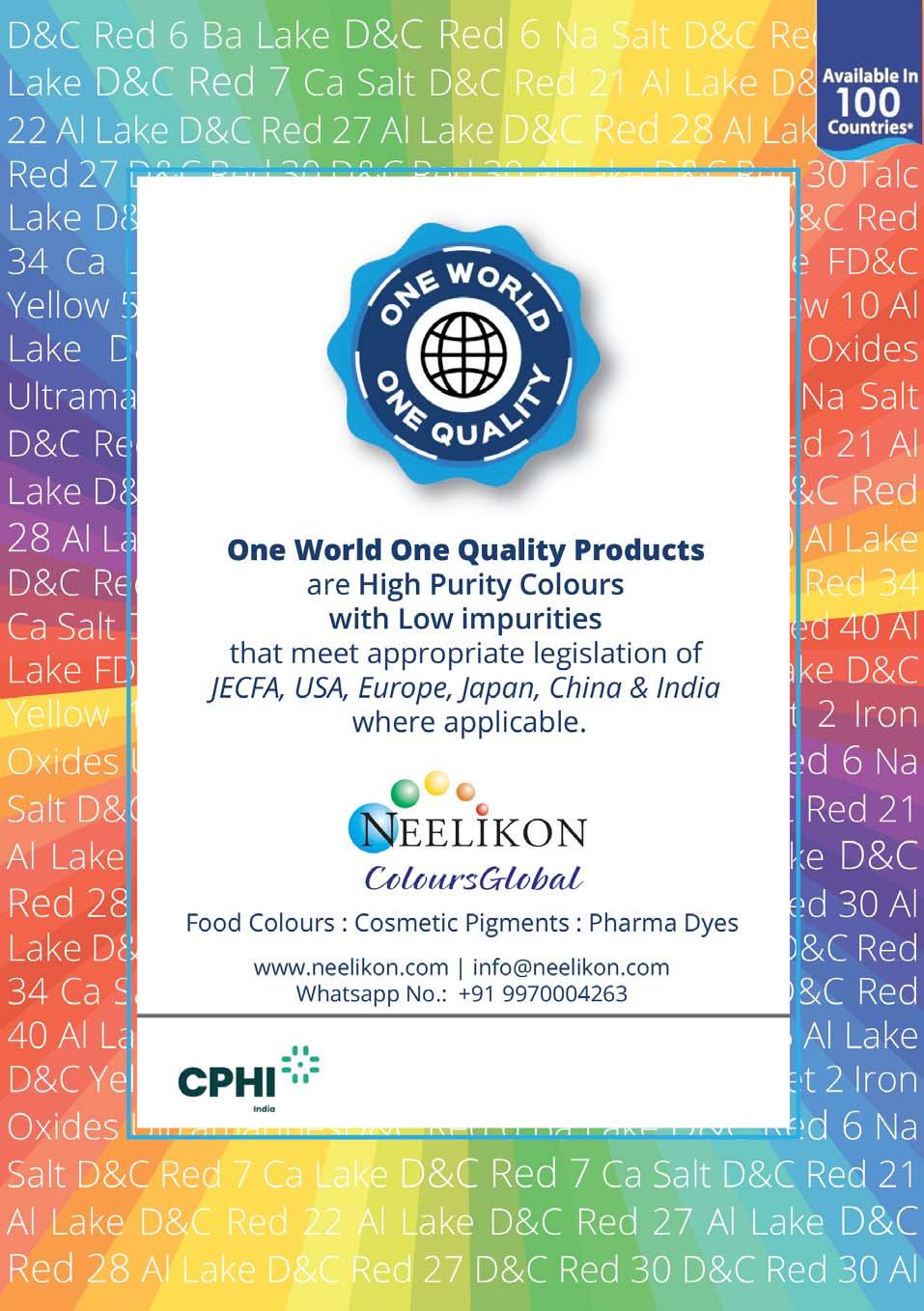
cines May 2019
3. Report of the Expert Committee on a Comprehensive Examination of Drug Regulatory Issues, Including the Problem of Spurious Drugs (Chair: Dr. R. A. Mashelkar) submitted to Ministry of Health and Family Welfare, Government of India,
New Delhi, November 2003
4. Smith RD et al Trade and health: an agenda for action Lancet. 2009 February 28; 373(9665): 768–773. doi:10.1016/S01406736(08)61780-8.
5. Justice Lentin Commission Recommendations Report after
investigation in the deaths of 14 patients in Sir J. J. Hospital in 1986
6. Judgment on Quality of medicines & WHO/GMP-2003Bombay High Court at Nagpur (Writ petition No. 1702 of 2003 in the high court judicature at Bombay Nagpur bench

Pharma industry stakeholders shed light on several aspects and factors associated with the ‘one health’ concept and the veterinary market scenario in India

 By Akanki Sharma
By Akanki Sharma
The COVID-19 pandemic re-focussed attention on how zoonotic diseases can disrupt human lives and have a longterm impact on global health. Given the fact that 60 per cent of all emerging infectious diseases reported globally are zoonotic in nature, it is obvious that ensuring the health of animals, ranging from pets to commercial livestock, will nip emerging zoonotic threats before they get out of hand.
As Dr K Anand Kumar, Managing Director, Indian Immunologicals, informed, "Thirty new pathogens have been identified in the last three decades and 75 per cent of them are from animals. One billion cases of illness and millions of deaths occur due to zoonoses. Given the above background, human health is directly linked to animal health."
There is no doubt of the market opportunity. As per the Indian Federation of Animal Health Companies (INFAH), the animal healthcare market in India is estimated to be around Rs 7,000 crore in 2021-22, comprising livestock (55 per cent), poultry (33 per cent), companion animals (eight per cent), aqua (three per cent) and one per cent for other remaining animals.
Although there is no published data, INFAH estimates that nutritional products make up the bulk of this animal health products at 39 per cent, followed by paraciticides (20 per cent), antibacterials (17 per cent), biologicals (13 per cent), and 11 per cent from other categories. There are reportedly nearly>50 major companies operating in India's animal health market, though the market is dominated by top 10 players, as per the INFAH website.
A report from Allied Market Research has rev ealed that the global animal vaccines market size was valued at $9,039.9 million in 2020, and is projected to reach $15,201.5 million by 2030, registering a CAGR of 5.2 per
cent from 2021 to 2030.
For over 20 years, Intas Pharma has been active in the animal health industry. A company spokesperson informed Express Pharma that the Indian pet healthcare market is one of the fastestgrowing markets, and, subsequently, some of the specialty and super specialty products already trending in developed markets are expected to be launched here as well. “With the spurt in pet ownership, almost all the segments are expected to grow >20 per cent, and, mainly, the food sector has witnessed significant growth over the last five years. The overall market is expected to grow at 25 per cent,” the spokesperson noted.
Another company, Hester Biosciences, has also recently entered the pet care market with a holistic line of products for companion animals
India is a growing market in terms of diagnostics,advanced nutrition, immunoglobulin therapy,advanced prophylactic therapy,and emerging therapies like behaviour modification,obesity management,and oncology in pet animals
Rajiv Gandhi MD and CEO, Hester Biosciences
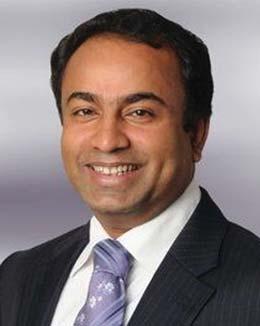
spanning anti-infective, antiparasitic, liver care, gut health, grooming and nutrition product categories. In addition, commenting on the upward trajectory, Rajiv Gandhi, MD and CEO, Hester Biosciences, noted, "India is a growing market in terms of diagnostics, advanced nutrition, immunoglobulin therapy, advanced prophylactic therapy and emerging therapies like behaviour modification, obesity management and oncology in pet animals. While these areas are well-established in the western market, in India, we expect to cover over 20 per cent in the coming four-to-five years.”
Similarly, Indian Immunologicals has been in the animal healthcare industry for over three decades, and, as per Dr Kumar, is the only producer of companion animal vaccines in the country. The company’s Raksharab -- anti-
rabies vaccine is the leading brand in its segment, and has 50 per cent of the market share, while vaccines Megavac 6 and Megavac 7 hold 35 per cent of the market share.
Indian Immunologicals is also the only producer of companion animal vaccines in the country, claimed Dr Kumar. “All other companies import the vaccine for sale in India. There are many companies in India that make formulations for use in the pet care market. Very few formulations are imported into the country by multinational companies. Worldwide, the animal health market is comprised of 52.7 per cent for pet care and 47.3 per cent for livestock. In India, however, the pet care market is only eight per cent and the rest 72 per cent is for livestock. This leaves a huge opportunity for the pet care market in
India to grow.
Explaining why animal health is a crucial part of global health, Dr Kumar pointed out,"With diminishing land holdings and deforestation, domestic and wildlife are in close proximity and spillover of pathogens to humans as result is inevitable. It is imperative to adopt the 'one health' philosophy to ensure all living creatures remain healthy.
"Indian Immunologicals is a one-health company, and we produce several vaccines in the ‘one health’ area such as rabies vaccine, brucellosis vaccine, vaccine for leptospirosis, etc. We also developed the world’s first vaccine for porcine cysticercosis (Cysvax)," he added.
As per an analysis by Data Bridge Market Research, the companion animal vaccines market is expected to undergo a CAGR of 5.60 per cent during forecast to 2029. This indicates that the market value, which was $3007.17 million in 2021, would rocket up to $4650.17 million by 2029.
'One health' is built on the understanding that animal health, human health and our shared environment form part of an inter-connected system. What affects one will ultimately affect the others. For example, rabies is still a devastating viral disease in humans in some parts of the world, and dog bites are associated with 96 per cent of morbidity and mortality. Vaccinating dogs (pets and stray, both) against rabies can prevent its transfer to humans and save lives. Every year, more than 59,000 people still die due to rabies infection, highlighted the Intas spokesperson.
Estimates suggest that more than six out of every 10 known infectious diseases can spread from animals to humans, and three out of every four new or emerging
Thirty new pathogens have been identified in the last three decades and 75 per cent of them are from animals
Dr KAnand Kumar Managing Director, Indian Immunologicals
diseases in people come from animals. Thirteen zoonoses are responsible for 2.4 billion cases of human illness and 2.2 million deaths per year. Among them, six zoonotic disease outbreaks cost the world an estimated $120 billion globally between 1995 and 2008. As per researchers, 3/4th of the new and emerging diseases are zoonotic and come from the wildlife, said the Intas spokesperson.
In 2011, the Kenya government instituted one of the world's first 'one health office' in their administration, combining the staff from the Ministry of Health and the Ministry of Agriculture. Early warning systems for wildlife could help detect emerging diseases before they reach people. Although, animal health research and development support can help pave the way for new technologies for disease control.
In India, too, under the genesis of the Indian Council of Medical Research (ICMR), an exclusive 'one health’ centre is being established in Nagpur, Maharashtra. With its cohesive multi-sectorial team, the centre would study the different diseases causing pathogens in domestic and wild animals for better preparedness to contain illnesses that humans may get in the future, according to this spokesperson.
The implementation of 'one health' has been targetted by India's Department of Animal Husbandry and Dairying (DAHD) under One Health India project which has already been initiated in two states namely Uttarakhand and Karnataka.
Dr Kumar further mentioned that Indian Immunologicals has had significant interests in both animal health and human health predating the COVID-19 pandemic. “We believe in “disease preve ntion” more than “disease treatment.” Vaccines are safe on the environment and have significantly led to the reduction in the use of antibiotics,
and, thereby, antimicrobial resistance (AMR). Every year, 1.27 million deaths are attributed to AMR by the World Health Organization (WHO). Companies will focus

on developing vaccines for many organisms that have developed resistance to the leading class of antibiotics. Companies will also work on new-generation
vaccines as the existing vaccines in some cases, such as the BCG vaccine for tuberculosis, are not effective in p revention of the disease.

The drugs, pharmaceuticals and biologicals intended and licensed for pet use have to follow the stringent
regulatory process routed through the Central Drugs Standard Control Organization (CDSCO), Ministry of Health and Family Welfare (MOH&FW). The Department of Animal Husbandry and Dairying (DAHD) provides No Objection Certificate (NOC) as part of the Empowered Committee for Animal Health under the Ministry of Fisheries, Animal Husbandry and Dairying (MoFAHD).
At times, the products already approved in the regulated markets can have a faster approval process, which usually takes two years to get a similar new product
and launch in the market by companies. For biologicals, depending on the bacterial or viral strain involved, its approvals could be attained in around two-to-three years. Nutraceuticals and food products can be launched comparatively in a shorter period, informed the spokesperson from Intas.
Dr Kumar also mentioned that vaccines are governed by both the state and central licensing authorities. He highlighted, "Multiple approvals are required, and the process of licensure involves several steps and takes several years. Efforts are being made by CDSCO to streamline and
reduce the number of process steps without compromising on the quality, safety and efficacy aspects."
While the sizeable livestock and poultry markets will continue to grow, the pet care market is slated to grow exponentially, as rising income levels spur more people to keep companion animals and/or pets in their homes. Health researchers indicate that making a dog, cat or bird part of the family provides strong encouragement to lead a healthy lifestyle. The changing patterns of pet adoption in India highlight the share of
the young generation as the most significant, compared to the rest of the age groups. During COVID and postCOVID, the number of firstpet households have seen an extraordinary increase in two years, and this trend continues.
Like humans, animals too will benefit from increased research focus and funding during the pandemic. For instance, many new platforms for the manufacturing of vaccines such as mRNA and adenoviral vector-based are emerging on the back of the success of the use of such technologies in COVID19 vaccines. Combination
vaccines that offer tremendous advantages to the customers will be pursued. Alternative needle-free vaccines that offer ease of administration such as oral, intra-nasal vaccines will emerge.
All in all, the 'one health' approach seems an imperative with no alternative, if we are to prevent future pandemics. And animal health-focussed companies like Indian Immunologicals, Hester Biosciences and Intas Pharma will continue to play an important role in preventing future zoonotic threats.
akanki.sharma@expressindia.com journoakanki@gmail.com


Dr Ashok Kumar, President,CRD, IPCA Laboratories, explains how a focussed research on microbiomebased interventions can help to understand the mechanism of action for developing a more rational and scientific approach and clinical efficacy data,before giving it as a therapy to patients
Compassion or an act of kindness with selfless motive makes people ‘feel good deep inside,’ difficult to express in words. Some of those having routine to yoga or physical exercise may have also found themselves in relaxed or euphoric state (at least sometime) after the workout. This ‘feeling good’ was earlier believed to be related to the endorphins (endogenous opioids) surge, but has, of late, been found to be linked to the release of endocannabinoids, such as Anandamide, a Small Chain Fatty acid Amide (SCFA), known to participate in our body’s endocannabinoid system (ECS) by interacting with cannabinoid receptors. These receptors are also activated by compounds, such as THC
(Tetrahydrocannabinol) and CBD (Cannabidiol), found in Cannabis (Psychoendocrinology, 126, 105173, 2021).
The striking feature of the other paper published in the same year ( Gut Microbia 1997559, 2021) was the finding that exercise leads to noticeable change in the composition of gut microbiota producing anti-inflammatory substances (SCFAs) and lower levels of pro-inflammatory genus Collinsella, on the constant basis; and this shift is linked to the spike in the release of endocannabinoids. The latter are also known to possess potent anti-inflammatory activity, and, therefore, also help in managing conditions such as cancers, and even heart diseases, by reducing chronic inflammation. For those curious to know the origin, the name ‘Anandamide’ is taken from the Sanskrit word Ananda , which means ‘Bliss’ or ‘Joy’ (DOI:10.180/19490976.2021).
The gut microbiome/microbiota:
The large intestine, also commonly known as colon, has surface area touching 350 sq. ft. and hosts ~ 95 per cent of the total human microbiome (~100 trillions in numbers) and account for -> 0.2 kg of the body weight of a normal human adult.
The microbiota of a human is quite diverse and constitutes approximately 4,000 different strains of bacteria, viruses and fungi. We possibly know a bit about bacteria, but probably lack almost complete knowledge of the viruses that inhabit in a human gut.
In 1885, Pasteur promulgated that “animals lacking bacteria would die,” but until the beginning of the 21st century, microbes were considered to produce toxins and also the cause for the poor mental health of patients. ‘All diseases begin in the gut,’ as proclaimed by Hippocrates over 2,000 years ago, may not be completely true, but, today, scientists believe that gut microbes play an important role in keeping the human health in shape.
We are what we eat and think: Mounting evidence illustrates that diet plays an important role in shaping the gut microbiome, but there are good number of reports suggesting that close, yet sustained relationship (e.g. marital), harbour microbial communities of greater diversity and richness relative to those living alone ( Scientific Reports 9, 703, 2019). Higher levels of wisdom, compassion, social support and lower levels of loneliness are found to have strong link to more diverse and rich gut microbiome, as reported by researchers from the University of California, San Diago ( Front Psychiatry 2021,12,648475). These findings suggest that not only food, but the social interactions are also critical in maintaining quality gut microbiome ( Labroots 30/3/2021).
Gut microbiome and mental health: Apart from providing home to microbes, our gut also hosts Enteric Nervous System (ENS) also known as second brain because it
seems to act autonomously, without involvement of CNS. And, if one remembers the emotions like having butterflies in the stomach, when excited or nervous, it is because of the sensitivity of the ENS.
Gut-brain is the key to maintain two-way biochemical signalling between GI tract and the CNS through vagus nerve, but it was the report published by Sudo et al in J Physiology in the year 2004, which, for the first time, brought a new dimension to the existing knowledge that the germ-free mice are more susceptible to stress compared with those having intact microbiota and the finding published by Cryan’s group in PNAS- USA, 2011 confirming that vagus nerve is involved in providing connection between microbiota and the brain.
Four week intake of yogurt with probiotics (Bifidobacterium, Streptococcus, Lactobacillus and Lactococcus), for example, modulating the brain regions that control the central processing of emo-
tions and sensations, observed in the randomised controlled trials ( Gastroenterology, 2013, 1394-401); and the confirmation of the consistent depletion of bacteria (Coprococcus and Dialister), known to have correlation with human health in the individuals suffering with depression, found from the studies conducted under Flemish Gut Flora Project (Nat.Microbial.2019, DOI:10.1038/s41564-018-0337x) can be considered as evidence for substantiating the link between gut microbes and human brain health.
So far, there is no knowledge on the underlying mechanism how gut microbes influence or modulate human health. However, it is more than evident from the above discussion that there is a microbiagut-brain-axis and many disorders such as anxiety, depression, schizophrenia, etc have some connection with this axis. However, once we believe in the said hypothesis, many questions which come spontaneously to our mind include:
◆ is it possible to use microbes for disease treatments?

◆ is it possible to prevent diseases in general and even the neurodegenerative diseases such as Alzheimer’s and Parkinson’s (for which there is no treatment available so far) by improving or manipulating the microbiomes of the patients?
◆ could it be possible to restrict the ageing process or reverse it via microbiome therapy, as demonstrated using mice model where scientists found rejuvenation of some aspects of brain and immune functions of the animals ( Nature Aging 1. 666-67, 2021)?
The answer of these questions is more likely to bemay be - ‘yes’ ! – because lots of studies are going on across the globe to translate the existing knowledge into treatments. Fecal Microbial Transplantation (FMT), how-
ever, has already shown some promising results, as highlighted below:
FMT and Parkinson’s disease: The finding of the study published in the journal Cell suggests that feeding the mice with the microbes taken from the gut of the people suffering with Parkinson’s made the animals' symptoms worse in the mouse model of Parkinson’s disease. However, since FMT from healthy donors did not show any observable impact on the animals’ symptoms, one can believe that gut bacteria are indeed linked to neurodegeneration ( Cell 167. 1469-1480, 2016). One should, however, not conclude that we are anywhere close to find a treatment for Parkinson’s disease.
FMT and insulin sensitivity: A recently published work ( Nature Medicine 27, 1272-1279, 2021), however, takes us to a higher level of confidence which provides the Proof of Concept for the use of single-dose oral FMT generated from healthy donors to increase insulin sensitivity in patients suffering with severe obesity and metabolic syndrome in a randomised double-blind placebo controlled phase-II trial FMT.
FMT and cRDi: The treatment of recurrent infections caused by Clostridium difficile (rCDi) using FMT, supported by several randomised clinical trials with a high success rate, is not only stabilised, but, is now considered as a second-line treatment ( Clin. Endosc 52,137-143,2019); doi:5946/ce.2019.009). The same approach is also being considered for other GI diseases as well such as IBD, IBS and hepatitis encephalopathy.
FMT and cognition: Based on the findings that FMT from young mice to aged one helps increase their cognition, the Motion Study, sponsored by Quadram Institute
Biosciences has started tracking the gut microbiome and cognitive function of people aged 60 years living in East Anglia, with an aim to identify how microbiome changes correlate with the cognitive decline, and also
finding a solution for, atleast, controlling the further decline, if possible, in the affected people.
FMT and cancers therapy: A more recent paper appeared in Nature reports that microbiome can have effect on the progression of distant tumours, the side effects of the treatments and the ability of the immune system to pickoff cancer cells. The paper also reports that FMT has already helped some people to overcome resistance to immunotherapies and at least 30 FMT trials are currently underway around the world, being conducted by academic institutions and pharma companies ( Nature , 607, 436-439, 2022). Dr Boursi, an oncologist at the Sheba Medical Centre who has already treated 30 people, believes that this approach could open the door to a “new era of ecological oncology,” in which understanding of tumour, host, the immune system and resident microbes will lead to better cancer treatment.
COVID-19: The findings of the paper published last year ( Gut 70, 698-706, 2021) suggest that depletion of immunomodulatory gut microorganisms contribute to severe COVID-19 disease and bolstering of the beneficial gut species, otherwise depleted in COVID-19, could serve as a novel avenue to mitigate severe disease, underscoring the importance of managing patients gut microbiota during and after COVID-19.
The wayforward FMT demonstrating improvements in the insulin sensitivity of patients suffering with metabolic syndrome and clinically proven success in treating recurrent rCDi substantiated by the findings compiled in the text can be considered as a reasonable support to believe that maintenance, improvement or manipulations of gut microbiota may one day provide us a healthy solution for treating or managing many diseases, and also maintaining good
health without the medicinal intervention. However, more focussed research to understand the mechanism of action to develop a more rational and scientific approach and clinical efficacy data to support the findings is critical, before microbiome-based
interventions could be given to patients as approved therapies.
It is difficult to predict the time frame within which the microbiome-related approach could see, even if it does, the light of the day, as far as the availability of the proven

treatments are concerned. However, one thing which is almost clearly evident from the above discussion is that diet has significant impact on the quality of gut microbial flora, on the gut health and mental wellbeing, and, therefore, it is important to make
note of what we eat. Since higher levels of wisdom and compassion have shown to help maintaining quality microbiome, a lifestyle fortified with the virtues of humility and gratitude will surely lead us to an Anand-maya life! Let’s give it a try !!
Thebrand called 'India' has not only fuelled an adrenaline rush across the country, but also triggered several wordplays at a global level: from ‘Made in India,’ which mutated to ‘Make in India,’ to the recent ‘Heal in India’ initiative, that is a moot point for debate when it comes to the Azaadi Ka Amrit Mahotsav’– 75 years' celebrations.

COVID-19 was one such missed heartbeat for the nation. The daunting challenges of the pandemic provided the right climate for India’s healthcare infrastructures and powers to bond in creating a robust mechanism for discovering success secrets to secure its own future.
While India was lauded for setting a benchmark in respect of the reliability of its manufacturing capabilities for testing and successfully implementing vaccination at lightning speed, it could have utilised the rare experiences of the pandemic to brainstorm critical ideas first and then propel the cause of 'Heal in India' and 'Heal by India.' It was an experience of a lifetime for the world when it was plunged into a crisis where all capabilities were perforce stretched to a breaking point.
The 'Heal in India' announcement may have several pros and wins, but being alert to the cons is even more potent. Cognizance of the impact on the overall approach towards the Indian healthcare model is crucial. Here are some of the hits to be applauded.
A special visa category, AYUSH visa, is on the cards for those foreign nationals who choose to avail AYUSH therapies. This is part of the initiative to promote the brand AYUSH (the ancient medical systems Ayurveda, Yoga and Naturopathy, Unani, Siddha, and
Homeopathy). In order to facilitate seamless implementation and facilitation of the initiative, special desks with interpreters have been assigned across airports. A multi-lingual portal and simplified visa rules will ease the overall process to make optimal use of the initiative.
India is a medical tourism destination for the increasing number of citizens from 44
countries who regularly visit India for various healthcare services due to the affordable cost and high quality of traditional medicines. This trend has fuelled the revenue from the medical tourism market to $6 billion in fiscal 2020, and is expected to reach $13 billion by 2026.
The portal will also provide various treatment details, packages, systems, redressal and
feedback mechanisms. Patients can be tracked by way of a unique health ID as per the Ayushman Bharat Digital Mission (ABDM) framework. Their respective service levels can also be assessed.
A slew of infrastructure augmentation is on the anvil across 37 hospitals in 12 states – Delhi, Gujarat, Karnataka, Haryana, Kerala, Maharashtra, Punjab, Tamil Nadu, Telangana, West Bengal, Andhra Pradesh and Assam – one of the most predominant healthcare delivery states when it comes to medical tourism. The Ministries of Health, Tourism, AYUSH and Civil Aviation have partnered with the Ministry of External Affairs to boost medical travel. The Medical Value Travel Council is the nodal agency to oversee the overall execution.
The Public Private Partnerships (PPPs) have undoubtedly been the source of success for any form of healthcare model in India. The PPP model has proved its worth in closing the yawning performance gap between the hamstrung public healthcare systems and the frontline private healthcare players.
The pandemic triggered positive collaborations, catalysing the combination of public and private capacities across diagnostics, technology and the lastmile healthcare delivery. Needless to say, the highly powered start-up ecosystem injected its speed and vigil into the entire healthcare spectrum.
CoWin is the best example of the success of the PPP model, which has been making its mark for over a decade now, spurred by encouraging policy initiatives. The PPP appraisal committee, appraisals and approvals of projects, and transparent bidding
processes have been some enablers of India’s astounding success as the largest aggregator of investments in the South Asia region in 2021, recording a 49 per cent growth in investments via the PPP routes.
Over time, in the absence of encouragement from the government, healthcare, as a sector, has grown in answer to the nationwide demand. Secondly, the stellar doctors and healthcare professionals mushrooming out of India’s healthcare education sector have made the country the Mecca for medical talent. While these education models may not be the best on the global scale, the worldwide demand for Indian doctors, as also other medical staff, is a given.
New winds are blowing through the country’s health sector. The massive privatisation in healthcare with apparent regulatory indiscipline, which often accompanies the robust growth of any sector has led to competition between public and private healthcare policy experts. In addition, the government's outreach programmes for the masses, the restructuring of the CGHS rates, payments and delivery mechanisms, price control and intent to support universal healthcare are other factors that can drastically change the scenario.
Is India ready to invite the world to 'Heal in India,' or should it choose to focus on working to empower the nation’s healthcare ecosystem that continues to be crippled by its own shortcomings? It is time to be alert to the country’s healthcare call for addressing the right priorities: “Heal India First,” then, “Heal in India.”
crippled by its own
and Solicitors,explains in detail
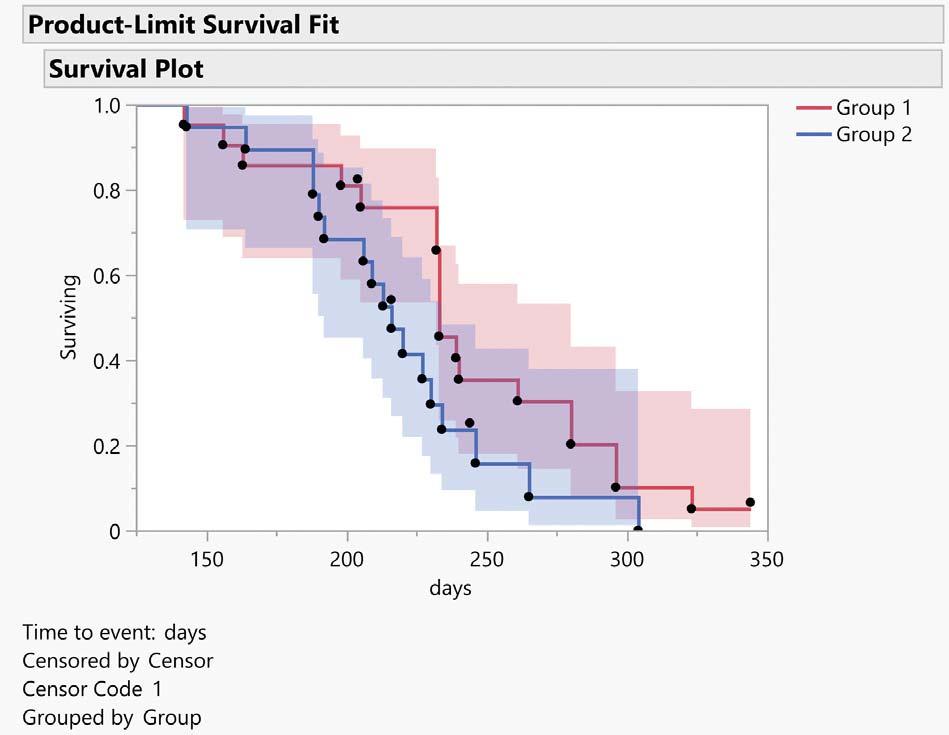

Pharma stability studies can be used to assess a drug substance,a formulation,a drug product, or a packaged product
stability may impair the purity, potency and safety of a pharma drug product. To safeguard patients, a reliable shelf life must be ascribed to a product during its development and commercialisation. A shelf life that is too short can be problematic, and an unreliable or inconsistent shelf life can invite regulatory intervention. The correct evaluation of a drug product's physicochemical stability requires an understanding of its physical and chemical properties, and numerous factors affect the final shelf life, including its chemical and physical stability during pre-clinical formulation, process development and packaging development, and how it is stored in fulfilment and after sale.
Pharma stability studies can be used to assess a drug substance, a formulation, a drug product, or a packaged product. Pre-clinical animal and human studies are used to determine a drug's safety and efficacy. Identification, concentration and purity are defined as quality attributes. If a drug's properties change during a stability study, the established safety and efficacy data may no longer be valid. Changes in drug stability could jeopardise patient safety by reducing dosage.Instability can produce toxic degradants.
Pharma products have a shelf life that determines how long they are safe and effective under specific storage conditions. The shelf-life is determined by several factors. Among these are the chemical stability of the Active Pharmaceutical Ingredients (APIs) in the chosen dosage form and whether any degradation products are potentially harmful to patients. Further, factors affecting an API's bioavailability can shorten shelf
On demand Video – Pharmaceutical Product Stability
https://www.jmp.com/en_in/eve nts/ondemand/technicallyspeaking/pharmaceutical-product-stability.html
In this webinar, you will learn about JMP’s regulatory complaint stability testing. JMP offers built-in stability testing capabilities designed to simplify the determination of expiration times in accordance with ICH guidelines.
https://www.jmp.com/en_ca/offers/stability-analysis-madeeasier.html



life. These include degradation of API potency, precipitation (for liquid dosage forms) and slowing of API release in the gastro-intestinal tract. Accelerating the ageing process by increasing temperature and relative humidity allows predictions of stability to be obtained more quickly, so that pharma development and production can proceed without waiting for the shelf life to expire. JMP supports stability testing in all these crucial phases and helps generate actionable data that conforms to regulatory requirements.
APIs, whether biological or small molecules, are susceptible to organic chemical degradation. Regulatory agencies require that such degradation products be assessed to correctly assign a shelf life to a product. The shelf life is limited by the time it takes for any degradation product to reach an unacceptable level or for the active ingredient to lose potency. Permitted amounts of degradants are based on the total daily intake of the API, and are described as reporting, identification, or qualification
thresholds.
Stability testing comprises distinct phases in accordance with the developmental phase of the drug development lifecycle. JMP can analyse stability testing data from all these stages.
The discovery phase determines the optimal stability. This phase focusses on the drug's formulation and storage conditions. The container-closure system with which the product will come into contact is optimised, and the impact of critical excipients investigated. Design of experiments, linear regression, multiple regression, analysis of covariance, and non-linear regression are all required for this phase. Test results are compared to specifications using simple linear regression.
Scatterplots are useful to explore the relationships between two periods, locate outlying or otherwise unusual values, and identify possible trends. Linear correlation measures the strength of any linear associa-
tion between stability and time: The strength of the association is measured using Pearson's linear correlation coefficient.
During the pre-clinical phase, stability profiles for drug substances and products are determined and reviewed. This gives an early indication of the stability profile of clinical batches, so that any process or product changes made since the discovery phase can be optimised. The statistical methods used in this phase include correlation, simple linear regression, analysis of covariance, non-linear regression and an assessment of comparability or equivalence.
The clinical phase aims to assure that clinical batches have the same stability profile as the pre-clinical batches, so establishing the best stability conditions. A retest period for the drug substance and a shelf life for the drug product is established. This phase examines any recent changes in process or product conditions using correlation, simple linear regression,

analysis of covariance, non-linear regression, estimation of mean and individual confidence intervals, extrapolation and an assessment of comparability or equivalence.
The commercial phase identifies batches that are out of specification, and also addresses any changes to labelling. The statistical methods used include correlation, simple linear regression, analysis of covariance, non-linear regression, statistical intervals, control charts and an assessment of comparability or equivalence. JMP helps detect out-of-specification and out-oftest results and supports label changes needed to accommodate process and product modifications. JMP has a dedicated stability platform that caters for ICH Q1E testing and is in conformance with 21 CFR guidance.
JMP allows you to conduct your stability programme according to the FDA's cGMP guidelines in 21 CFR Part 211 and ensures the compliance of all data-related aspects of stability testing and the laboratory in which it is carried out.
Used by hundreds of thousands of data explorers worldwide, JMP data analysis software reveals insights that raw tables of numbers or static graphs tend to hide. Get more out of your data by downloading a free, fully functional 30day trial now.
https://www.jmp.com/en_us/do wnload-jmp-free-trial.html









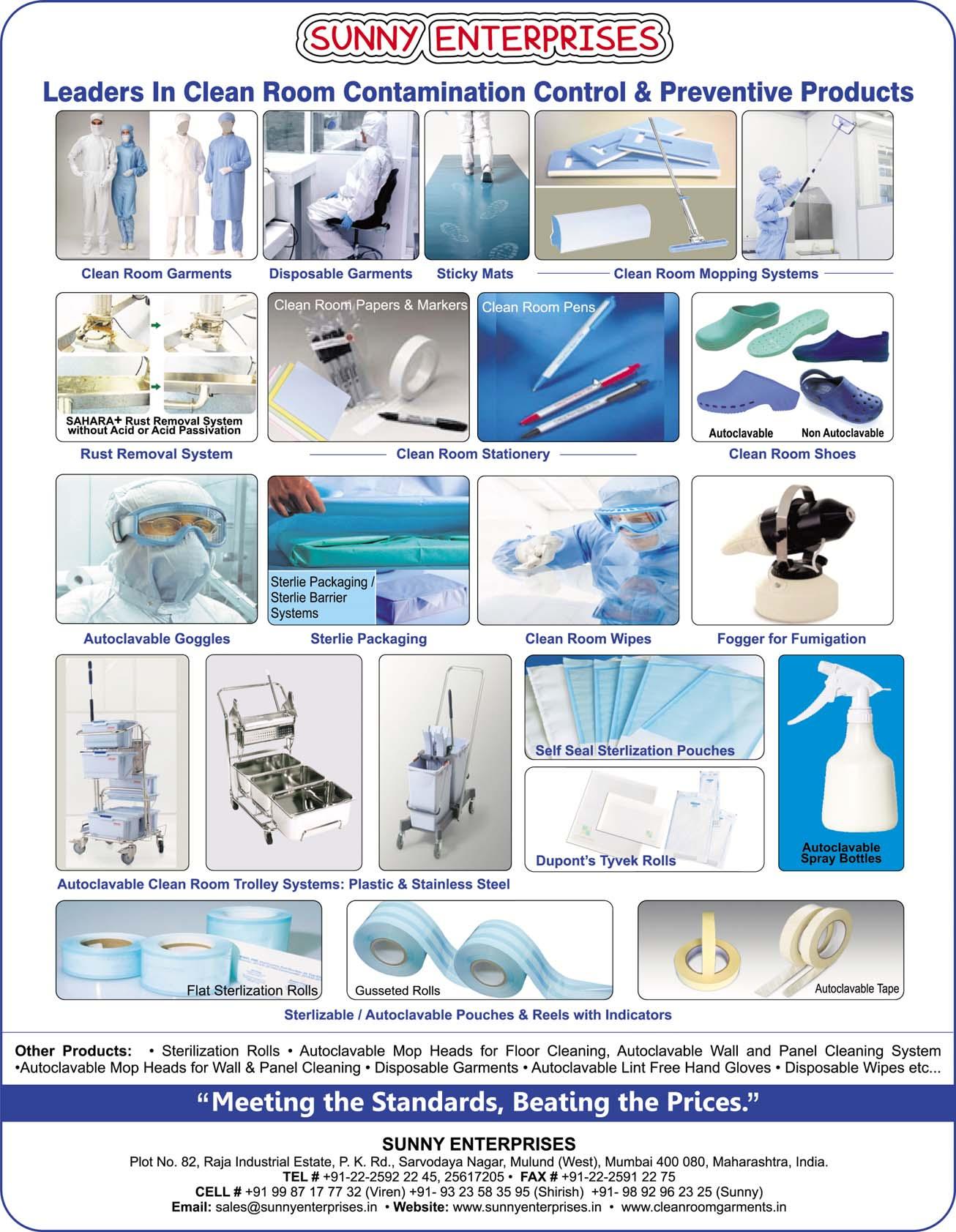

















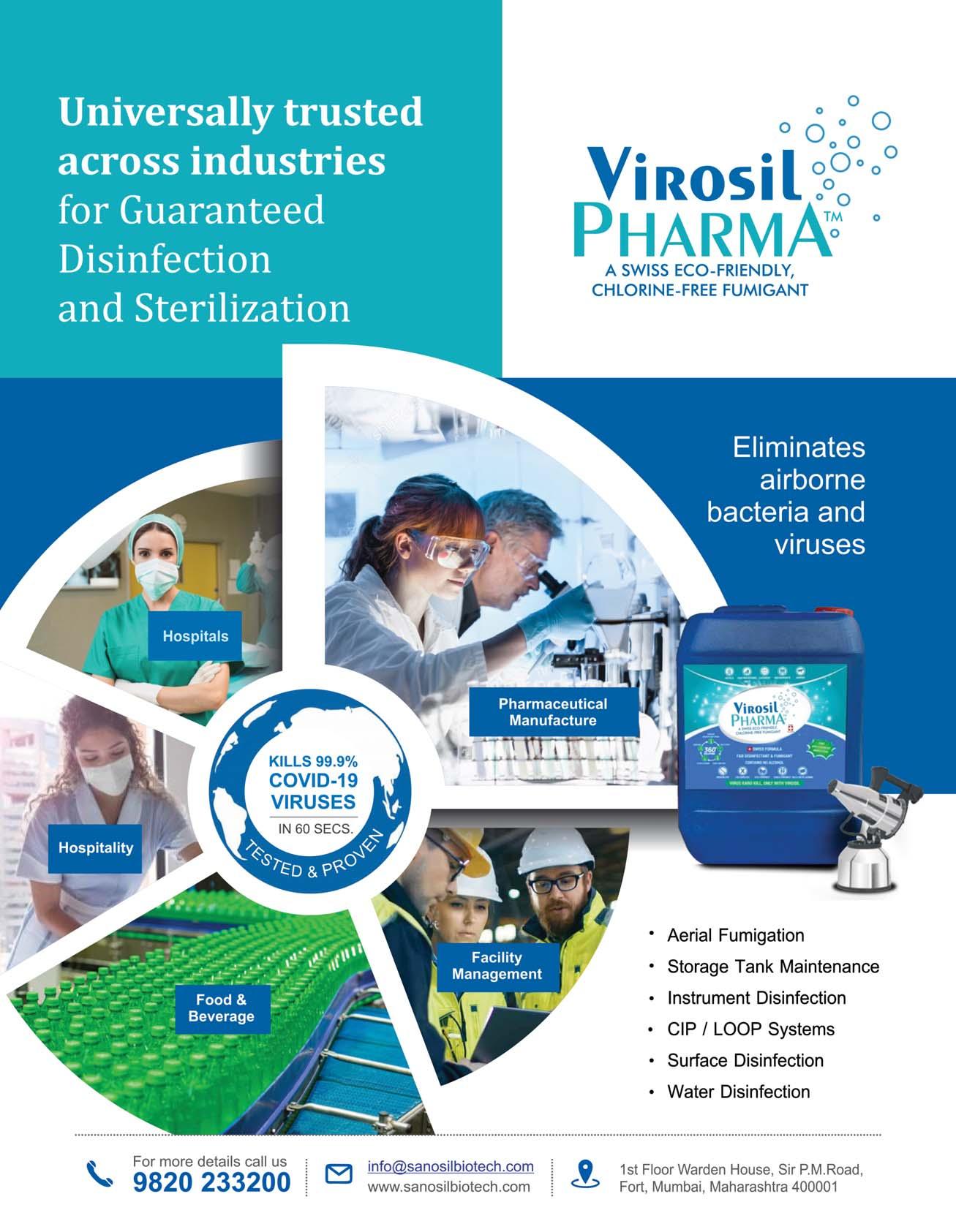

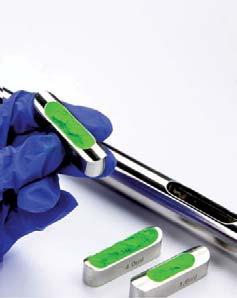
















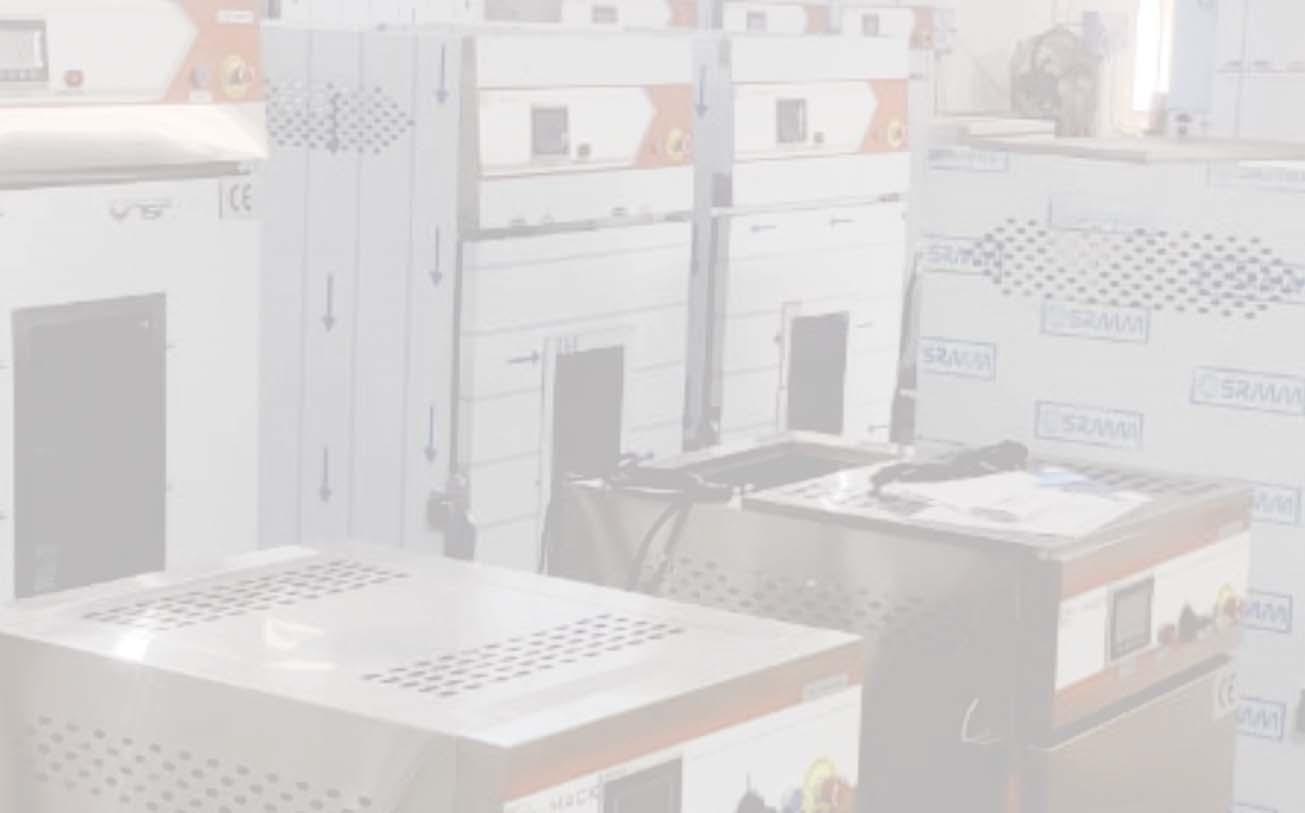















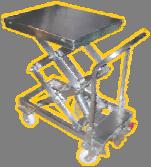




Offersthewidestrangeofosmolalitytesting(0–4000mOsm/kgH2O)
Supports21CFRpart11,GMPandEUAnnex11compliance
MeetsPharmacopeiaosmolalitytestingguidelines


3Leveluseraccessandpasswordprotection
Storage:unlimiteddatastorageforaccess
Audittrail:Preserveunlimitedresultsandevents

Databasebackup,protectsyourdatawithautomaticormanualbackup
No.127,BussaUdyogBhavan,TokershiJivrajRoad,SewriWest,Mumbai-400015, Maharashtra,Landline:+91022-24166630Mobile:+919833286615



AllnozzlesareprovidedwithTCtypesanitary
Withcountlesssatisfiedcustomers,ourNutsche filtersarepreferredasastandardbyallmajorAPI& Bulkdrugmanufacturers.Experienceoursuperior levelsofcustomizationbygettingintouchwithour technicalexperts.





Medical industry is equipped with better market strategy and sustainable market growth options. For all these years, the industry giants have penetrated in depth to understand the market for its present and futuristic growth. The only time consumption that takes the industry reinventing and redoing the work are the regulatory affairs that keep on changing or adding to the bucket. Pharma is a major player for the growth of economy; thus, its contribution too is huge. Many innovations in the era of Industry 4.0 or 5.0 are surfacing the pharma industries by bringing the best of technologies that help the industry soar high in the market and achieve major growth for a sustainable future. When we think about sustainable options, the role is mainly to strategise for future by taking small steps today. Sustainability is now the need of the hour. So, by taking strong initiatives in bits, we can grow a secure and sustainable future.
To achieve sustainability Innovation is the first step to achieve sustainability. Machines in production lines have a limited wear and tear with conventional system, which does not allow higher speed because of the design. This is a huge sustainable issue with today’s manufacturers. Thus, one should always be looking at the energy efficiency of the older machines. Because it is not always a sustainable option to overuse this machinery if it’s taking a large amount of power. The key to a sustainable future for pharma industries is ‘preventative maintenance,’ to make sure that regular checkups on machinery are done to make sure it’s always functioning at 100 per cent capacity.
Leaders in medical device as-
sembly are creating solutions with the unprecedented ability to produce multiple product types and enabling small-batch flexibility without compromising productivity. This is a new generation of adaptive machines, uniquely efficient at automating dynamic changes. B&R has been developing innovative hardware and software solutions for more than 40 years.
The technical capabilities, customer experience and culture of innovation make a perfect technology partner for adaptive machinery in the medical and pharma industries. Smaller batches, customised medicines and a never-ending process of optimising TCO and OEE: the need for adaptive solutions in the production of medical devices has always been the necessity. Adaptive manufacturing creates entirely new solutions to challenges that would be difficult, if not impossible, to solve using a conventional approach. In cleanroom installations, this solution can pay for itself in footprint savings alone.
Further, workpiece trans-
port systems based on SuperTrak from B&R are compact, reliable and cleanroom-friendly. On many production lines, they successfully increase output while introducing valuable flexibility to the production processes. This track technology is an innovative process module to assemble medical devices both inside and outside the cleanroom. Today's plants and machinery take up a lot of space, but only a fraction of their footprint contributes to the production process itself. Far more real estate on the plant floor is dedicated to carrying products from place to place. It's time to break free from old limitations and set the stage for a new era of productivity.
With the high costs involved, compact machine design is a high priority in cleanroom applications. SuperTrak stands out here, and, thus, integrating multiple processing steps in one station not only reduces the space required, but also makes the system more productive.

The digital transformation is impacting every industry, and pharmaceuticals are no exception; with some of the most stringent quality regulations to follow, the pharma industry faces unique challenges for which smart manufacturing offers promising solutions. When the starting point is a brownfield site with aging infrastructure and digitally isolated legacy systems, implementing the necessary connectivity can be a major hurdle. Industrial-grade, servicefriendly SuperTrak is the only long-stator linear motor-based system in the market to feature anti-sloshing technology.
This prevents spills during transport and positioning and allows filling lines to be operated at higher speeds. Independent SuperTrak shuttles allow mass customisation with minimal time lost on stoppages and changeover, maintaining energy efficiency too.
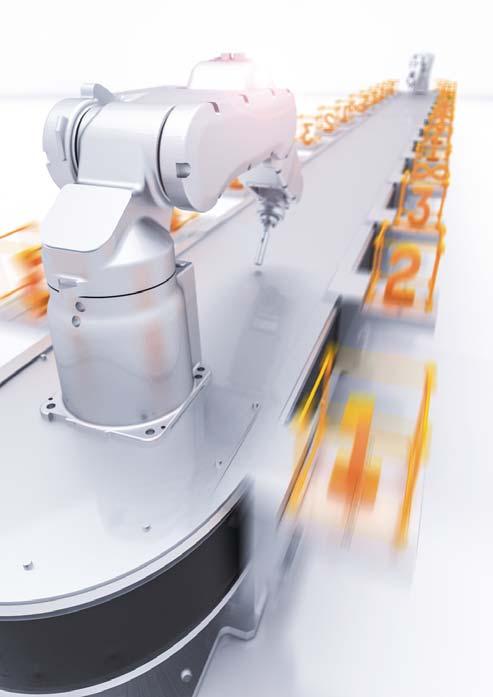
Thinking about sustainable options,the role is mainly to strategise for future by taking small steps
TheX34C delivers a unique X-ray solution to the market: cost-effective inspection of individual pharma packs, immediately after flow-wrapping or pack sealing. It is designed specifically for the detection of contaminants in pharma blister packs and sachets at high-speed.
The X34C X-ray inspection system is based on three key design principles of compactness, high-speed and precision: Compact footprint: The system has a footprint of just 700 mm in length, which includes an integrated reject. This means that X34C can be installed into production lines where space is at a premium.
High-speed capabilities: The X34C can operate at 120 metres per minute, making it possible for the first time to keep product inspection aligned with many high-speed flowwrapping machines and pack sealers used in the pharma sector for packing individual products. This combination of speed and compact footprint is currently unique in the market.

Precise performance: The optimised focal distance of the 0.4 mm diode detector and 100W Optimum Power Generator maximises the probability of detecting small contaminants and helps to reduce the False Reject Rate. Since the power and contrast levels of these components are automatically optimised for each application, the system does not always need to run at its full 100W output, delivering power savings.
For many manufacturers, the high-speed inspection that the X34C gives them provides multiple benefits, as it allows them to inspect and reject single products straight after they exit the flow-wrapper or sealer. This not only reduces waste, because single items rather
than multi-packs can be rejected, but it also allows the manufacturer to maintain high levels of productivity at this critical point of the production line. On the hardware side, the X34C can be configured to meet customer requirements, including with an airblast reject system to remove contaminated products at high speed.
Maintenance functions are
simplified through easy access to all parts of the system from the front. The X-ray system has been designed to operate in a range of working environments. It is rated at IP55 as standard for ingress protection, with IP65 also available for manufacturing environments which require a higher level of dust protection. Customers with cooler ambient
factory temperatures (less than 30 degrees Celsius) can choose active cooling through a fan system, which can improve the environmental performance of the system.
In summary, the MettlerToledo Safeline X34C is a fast and effective vertical X-ray inspection system, optimised for contaminant detection of individual products within a de-
fined application set: blister packs and sachets in pharmaceuticals. Manufacturers producing these products will benefit from its compact footprint, enhanced detection sensitivity and speed, whether they are multi-national organisations with multiple factories, or SME-sized operators with a single production line. In addition, they will enjoy the ease of use and proven robustness and reliability that Mettler-Toledo Safeline X-ray systems are already renowned for.
METTLER TOLEDO is a leading global manufacturer of precision instruments and a service provider. The company ranks highly in a number of market segments and is a global market leader in many areas. METTLER TOLEDO is the largest provider of weighing systems and analysis instruments for use in laboratories and in-line measurement within demanding industrial and food production processes.
The Product Inspection division of METTLER TOLEDO is one of the leading providers within the field of automated inspection technology. The division includes the following brands: Safeline metal and X-ray inspection, and CI-Vision. The product inspection solutions improve manufacturers’ process efficiency and help them comply with industry standards and regulations.
METTLER TOLEDO systems ensure consistently higher product quality, helping protect both consumers as well as the reputation of manufacturers and their products and brands.
For more information, please visit: http://www.mt.com/pi Call Toll Free -1800 22 8884 / 1800 10 28460 or Email-sales.sales@mt.com
Waters Corporation, a global leader in analytical instruments and software, has announced its newly-built Precision Chemical Manufacturing Facility in Taunton, Mass. It has achieved LEED (Leadership in Energy and Environmental Design) certification. The products manufactured at this facility are essential for thousands of laboratories that ensure the quality and safety of medicines, food and water for millions of people worldwide.
Waters Corporation celebrates the LEED Certification of its Taunton, Mass. Precision Chemical Manufacturing Facility -- the first of its kind in Massachusetts -- with leaders from business, federal, state and local government.

Designated by the US Green Building Council (USGBC), Waters’ Taunton site is the first and only LEED-certified chemical manufacturing facility in Massachusetts and among a small number of LEED-certified industrial manufacturing projects in the US. The site nearly triples Waters’s manufacturing footprint, and has already created 25 new jobs and provides growth capacity for years to come.
To meet increased customer demand, achieve greater levels of operational efficiency, and continue its commitment to grow sustainably, Waters invested more than $215 million since 2018 to build this state-of-the-art facility as a manufacturing Centre of Excellence.
“The materials produced at Waters’s Taunton facility are at the heart of the science that goes into the development and testing of mRNA vaccines and therapies such as those made to prevent and treat COVID and detecting contaminants such as PFAS in drinking wa-
ter,” said Dr Udit Batra, President and CEO, Waters Corporation. “As one of a small number of chemical manufacturing facilities in the country to achieve LEED certification, we are proud to be leading the way in helping to improve our environment, the health and well-being of our communities, and ensuring that the lifesciences industry continues to thrive in Massachusetts.”
The 140,000 square-foot chemical manufacturing facility is built on an adjacent site to where Waters has been producing laboratory supplies and chemistry consumables since 1976. At this facility, Waters manufactures chromatographic particles which are the backbone of its Chemistry consumables business, and are responsible for more than $300
million in recurring annual revenue. More specifically, it synthesises chromatographic media used by thousands of analytical laboratories around the world to support the research, development and manufacturing of pharmaceuticals, biopharmaceuticals, materials and foods, and to support clinical diagnostics and biomedical research.
With the understanding that typical chemical manufacturing plants use large volumes of both energy and water, the Waters facility incorporates many innovative features designed to reduce environmental impact, including: ◆ state-of-the-art, on-site industrial waste containment and treatment technology designed to reduce overall building emissions by an estimated
factor of six over Waters’s legacy manufacturing facility; ◆ wastewater recycling technology that reclaims and filters wastewater for use in property irrigation, climate control and the building’s restroom facilities; ◆ the building’s LEED design optimised for energy efficiency and indoor air quality, incorporating building materials that promote sustainability.
“Waters has shown through its investment and design that, in addition to creating jobs and supporting the lifesciences, chemical manufacturing plants can be a model for environmental sustainability,” said US Rep. Jake Auchincloss (DMA).
“Achieving LEED certification is more than just implementing sustainable practices.
It represents a commitment to making the world a better place and influencing others to do better,” said Peter Templeton, interim President and CEO, USGBC. "Given the extraordinary importance of climate protection and central role buildings play in that effort, Waters’s commitment to sustainability shows what’s possible by being the first chemical manufacturing facility in Massachusetts to be LEED-certified.”
To celebrate the achievement, Dr Batra hosted local government, business and academic leaders, including Jake Auchincloss, US Rep. 4th District (MA); Marc Pacheco, Dean of the Senate, State Senator for 1stPlymouth and Bristol District (MA); Shaunna O'Connell, Mayor, Taunton; Elizabeth Beardsley, Senior Policy Counsel, US Green Building Council; and other esteemed guests on 26th September, 2022 at its Taunton facility in Myles Standish Industrial Park.
Learn more about open positions by visiting theWaters careers page
Follow and connect with Waters viaLinkedIn,Twitterand Facebook About Waters Corporation (www.waters.com)
Waters Corporation (NYSE:WAT), a global leader in analytical instruments and software, has pioneered chromatography, mass spectrometry, and thermal analysis innovations serving the life, materials, and food sciences for more than 60 years. With more than 7,800 employees worldwide, Waters operates directly in more than 35 countries, including 14 manufacturing facilities, and with products available in more than 100 countries.
Fire shutters play a vital role in fire safety of buildings and industrial premises. Their correct specifications, installation and use is paramount to the safety of all

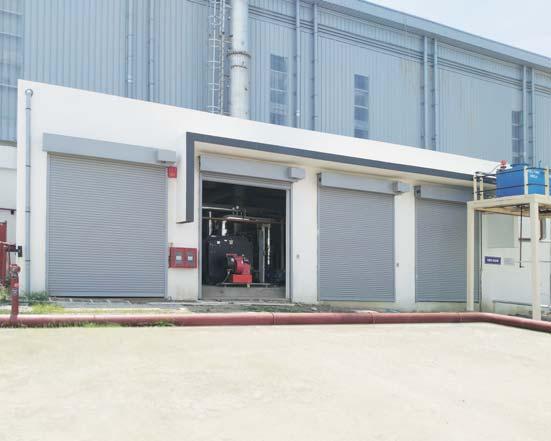


effectively in the event of a fire. Certified fire shutters with proper fitting is necessary to avoid any damage to property and lives.

fusible link mechanism releases the brake of the motor and allows it to descend by gravity.
The operating system can be directly wired for activation
are securely held using specially designed profile ends which act as a curtain alignment system thus eliminating lateral movement of the profiles. Fire shutters/doors de-
components are of utmost importance. At Gandhi Automations, the maintenance team checks that all parts continue to function correctly without compromise.
those who use the facility.
Fire shutters are the unsung heroes of the fire safety because for most of their working lives, they just work like any other doors. However, if fire breaks out, a fire shutter must fulfill its role as an engineered safety device, in order to hold back the spread of fire and smoke and to save lives and property.
Fire-rated doors/shutters are applied in various places such as industrial, commercial, institutional and retail projects where fire protection is required. We take fire shutters for granted. We need to regularly check that all parts continue to function correctly without compromise.
We expect a jobbing builder or small contractor to be able to install a complex engineered fire safety device. What he doesn’t realise is all of the components have to be able to work together to ensure the shutter assembly will work
Gandhi Automation are engineered carefully with the features mentioned below:Auto-closing mechanism: Fire doors/shutters designed by Gandhi Automations are equipped with fusible link mechanism. Upon sensing a temperature of 74°C, the
by fire alarm system or smoke detectors.
Sturdy construction: Fire doors/shutters are constructed from cold rolled Galvalume/ Galvanised Steel/ Stainless Steel laths with a minimum thickness of 0.9 mm. The inter-locked profiles
signed by Gandhi Automations can resist fire up to four hours. Gandhi and Exova Warrington UK, comply with BS 476: Part 22: 1987 standards for stability and integrity for up to four hours.
Maintenance: Frequent inspection/maintenance of the
For further details, contact: Gandhi Automations Pvt Ltd Chawda Commercial Centre Link Road, Malad (W) Mumbai – 400064, India Off : +91 22 66720200 / 66720300
Fax : +91 22 66720201 Email : sales@geapl.co.in
Fire shutters are the unsung heroes of the fire safety because for most of their working lives,they just work like any other doors
Yokogawa Electric Corporation and Mitsubishi Heavy Industries (MHI) have been selected by the Nippon Foundation, a private, nonprofit grant-making organisation, to undertake a project as part of the Nippon Foundation –DeepStar (1) joint Research and Development (R&D) programme for the promotion of decarbonisation in the field of offshore oil and natural gas.
The aim of this project is to develop an automatic inspection system that utilises robots to identify and predict hazards in offshore facilities. The use of a wide variety of robots to enable unmanned operations, and, thereby, reduce the risk of performing inspections on offshore platforms has long been considered. However, the centralised coordination of individual robots is complex as it requires the management of multiple systems and the data that they acquire. Yokogawa has already been engaged in the R&D of a robot service platform that centralises the management of multiple robots and seamlessly links them with the existing control systems.
Leveraging the findings of this R&D, this project will build a communications infrastructure and robot system that is well suited for the environment found on offshore platforms, and utilise an AI application to convert for use in offshore platform operations the image and sound data acquired by robots.
As part of the project, a proof-of-concept test will be carried out using the secondgeneration EX ROVR plant inspection robot that MHI introduced to the market in April under the name ASCENT.
With its explosion-proof features (2), the EX ROVR makes positive contributions to enhance worker safety, boosting work efficiency and improving facility operating rates by performing round-the-clock inspections under potentially explosive atmosphere conditions. The robot’s explosionproof qualification has already been certified both domestically and globally by the International Electrotechnical Commission (IEC) (3) and ATEX certification (4), explosion-proof standards widely adopted in Europe and other regions. These qualifications will enable the EX ROVR’s safe usage under Zone 1 combustible gas conditions.
The adoption of a 6-DOF (5) explosion-proof manipulator
with light-equipped camera enables close-up and front-facing photography, from diverse positions, of complexly arranged plant instrumentation. Measurement of gas density, sound recording and acquisition of thermal images are also possible. In addition, when used in combination with the online application provided as a standard feature, the operator can perform remote setting and management of inspection schedules and confirmation of inspection data. In the event of an incident occurring in the plant, remote monitoring enables swift identification of onsite conditions, thereby, contributing to higher plant inspection efficiency and safe and swift resolution of the incident in question.
Mitsubishi Heavy Industries’second-generation EXROVR “ASCENT”
Yokogawa provides solutions and services to its customers that will enable a digital transformation (DX) in their businesses, and is preparing the way for a future in which industries will make the transition from industrial automation to industrial autonomy (IA2IA). Robotics is a key technology that is paving the way to industrial autonomy. Yokogawa and MHI have already entered into a cooperation agreement regarding the utilisation of robots in the oil, gas and petrochemical industries. With this project, Yokogawa and MHI will jointly research and develop a robot system that is well suited for a variety of environments
and situations.
Development of an automatic inspection system that utilises robots to predict hazards in offshore facilities
Objective: Development of technology to improve the safety of inspection work on offshore platforms
Background: Currently on offshore oil and gas platforms, workers conduct daily patrol inspections and emergency inspections, but due to changing weather conditions and the risk of exposure to toxic gases, this can be a difficult task. Robots offer a promising solution; however, the image and sound data acquired by the robots cannot be interpreted as is by the operators who man the plant control systems. So, it is necessary to convert that into meaningful data. Further, unlike onshore plants, offshore platforms have limited access to public telecommunication services, and, it is, therefore, necessary for each facility to have its own telecommunications infrastructure for the operation of robot systems.
(a) Develop a robot service platform that links robots and control systems on offshore platforms
(b) Develop an AI application for the robot service platform
(c) Develop a robot system consisting of the robot service platform, robots and a plant control system
(d) Carry out a PoC test using MHI’s EX ROVR robot


development consortium based in Houston, Texas. Companies from around the world participate.
(2) A robot described as “explosion-proof” is equipped with features that collectively limit the danger of the robot causing an explosion or fire from its own electric sparks or heat in environments filled with inflammable gas.
(3) The IEC issues IECEx certificates that attest to equipment’s suitability for use in explosive atmospheres. IECEx certification, which is widely adopted internationally, is based on quality assessment standards set by the IEC.
(4) ATEX certification refers to two directives relating to explosive atmospheres (French: ATmospheres EXplosibles). The di-
rectives, which are based on IECEx, stipulate the health and safety requirements, and conformity assessment procedures, that must be met in order to bring to the EU market equipment or protective systems for use in explosive atmospheres. As the ATEX directives and IECEx follow the same standards, there is fundamentally no difference in terms of their technical details.
(5) Degrees of freedom. The EX ROVR’s manipulator end-effector can move in the upward, downward, right, left, forward and rear directions. It can also tilt forward or backward, swing to the left or right, and rotate tilted to the left or right.
About the Nippon Foundation - DeepStar Joint Research and Development Program to Promote Decar-

Based on a memorandum of understanding between the Nippon Foundation and the DeepStar consortium that was concluded in December 2021, and with funding provided by the Nippon Foundation, the two organizations will work together to promote the development of decarbonisation technologies.
About Yokogawa Yokogawa provides advanced solutions in the areas of measurement, control, and information to customers across a broad range of industries, including energy, chemicals, materials, pharmaceuticals, and food. Yokogawa addresses customer issues regarding the optimization of production, assets, and the supply chain with the effective application of digital technologies, enabling the transition to autonomous operations.
Founded in Tokyo in 1915, Yokogawa continues to work toward a sustainable society through its 17,500 employees in a global network of 119 companies spanning 61 countries. For more information, visit www.yokogawa.com.
About MHI Group Mitsubishi Heavy Industries(MHI) Group is one of the world’s leading industrial groups, spanning energy, smart infrastructure, industrial machinery, aerospace and defense.
MHI Group combines cuttingedge technology with deep experience to deliver innovative, integrated solutions that help to realize a carbon neutral world, improve the quality of life and ensure a safer world. For more information, please visit www.mhi.com or follow our insights and stories on spectra.mhi.com.
The names of corporations, organisations, products, services and logos herein are either registered trademarks or trademarks of Yokogawa Electric Corporation, Mitsubishi Heavy Industries, Ltd., or their respective holders.







